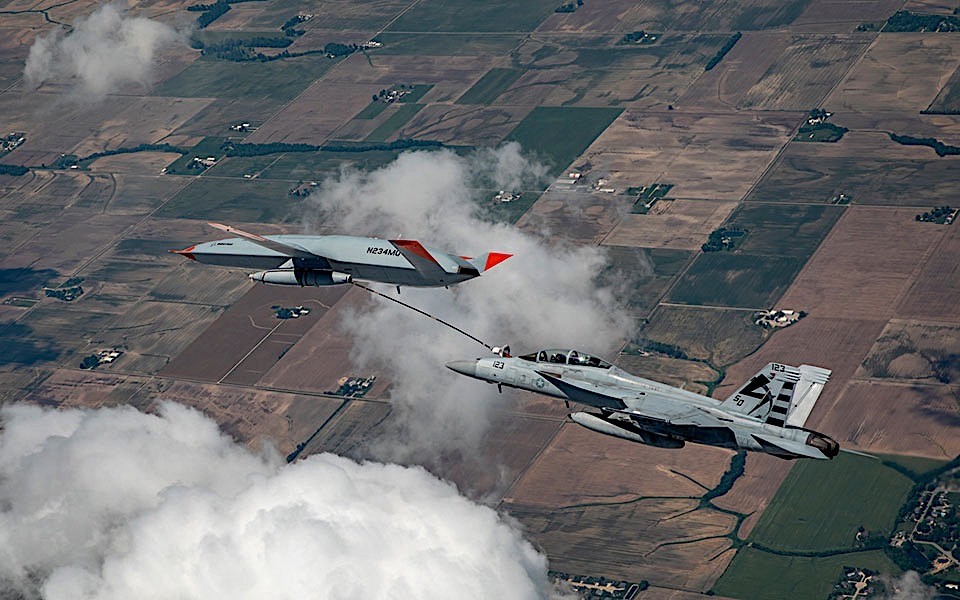Drones, once just gadgets for capturing breathtaking footage, are now evolving rapidly, poised to revolutionize various sectors from warfare to delivery services. The next leap for drones lies in their ability to collaborate with humans, expanding the range of control options.
Boeing, among others, is exploring this through “manned-unmanned teaming” (MUM-T), where drones and piloted aircraft work together seamlessly. Through simulated scenarios with F/A-18 Super Hornets, Boeing showcases how pilots could remotely control the Stingray for aerial refueling, utilizing existing communications links between platforms.

If successful, this technology could significantly reduce response times and enhance mission flexibility, particularly for the Navy’s Block II and III Super Hornets. Additionally, Boeing has explored Stingray’s versatility beyond refueling and has tested its capabilities for intelligence, surveillance, and reconnaissance (ISR) missions.
With underwing hardpoints, the Stingray can even carry weapons if needed. As Boeing progresses towards operational deployment, with plans to assemble the drones in Illinois, the future of aerial operations seems poised for remarkable advancements.

